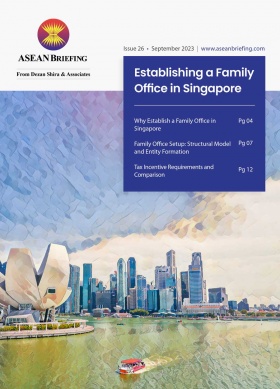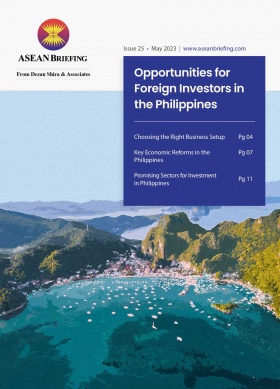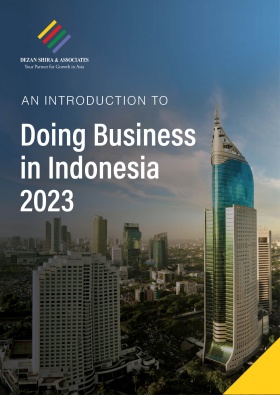Elevating Air Connectivity: Vietnam’s Airport Investment Drive
Vietnam is investing heavily to renovate and build new airports as it seeks to compete to become a regional hub for international travelers with its neighbors in Southeast Asia. A plan announced by the Ministry of Transport stated that Vietnam would have 30 airports by 2030 and 33 by 2050 with Hanoi and Ho Chi Minh City being the two major hubs.
Vietnam’s government is expected to invest more than US$4 billion to increase the capacity of Hanoi’s Noi Bai International Airport to 60 million passengers by 2030, approximately 2.5 times its current capacity. The airport is expected to have a passenger throughput of 7 million per year by the same year.Total air passenger travel in Southeast Asia is expected to reach 653 million people, nearly double from 2023. As such, countries in the region such as Indonesia, Thailand, the Philippines, Singapore, and Cambodia are also rushing to expand their major airports to attract foreign investment, meet rising domestic demand, as well as boost economic growth.
Opportunities for foreign investors but major challenges remain
Vietnam needs more than US$17 billion in investments for its airports representing huge opportunities for foreign investors. However, Vietnam has struggled to build major infrastructure projects such as railways and airports with most foreign investments going to factories for export-oriented manufacturing products such as electronics and garments.
Land acquisition continues to be a major problem for infrastructure projects in the country, as is the case in most emerging economies. People occupying lands often have no formal legal titles, as well as weaknesses in the legal and institutional framework are some of the challenges in implementing private-public partnerships.
The government introduced a new PPP law in 2021 that aims to clarify the existing legal framework to attract more foreign investments.
The notable changes from the previous PPP law include:
Investment sectors: The type of investment sectors has been reduced to five namely, transportation, healthcare, education, transmission grid, and water. Foreign investors engaging in these sectors can benefit from a wide array of incentives such as a preferred corporate income tax rate.
Capital requirement: The capital requirements for PPP projects are set between VND 100 billion (US$4.1 million) and VND 200 billion (US$8.2 million).
Revenue risk-sharing mechanism: Revenue risk allocation can aid PPP projects experiencing reduced revenue. It involves the state sharing 50 percent of the variance between the actual revenue and 75 percent of the projected revenue in the financial plan, with both the investor and the PPP project enterprise.
Government guarantees: The primary objective of the new law in Vietnam is to attract investments, and as part of this commitment, the government will offer guarantees to private and foreign investors. These guarantees encompass access to land and its usage, access to public services, property mortgage rights, revenue risk sharing, and various other assurances.
Competition heats up in Southeast Asia
The rise in domestic air demand in Southeast Asia is fueling the rush to expand and build new airports across the region. The competitive landscape in the region intensifies as countries like Cambodia, Malaysia, Singapore, Indonesia, and Thailand embark on sizable expansions of their airports to meet soaring domestic and international travel demands. These endeavors underscore the escalating competition among nations to establish themselves as key aviation hubs, thereby bolstering economic growth and attracting foreign investment.
Malaysia’s airports plan to double their passenger capacity to 150 million passengers in the next 10 to 20 years whereas Singapore is aiming to increase to 140 million passengers by 2030.
Indonesia’s largest international airport, Soekarno-Hatta International Airport, plans to increase capacity to 80 million passengers by 2030 and 100 million passengers by 2035. Further, Thailand expects to reach 200 million passengers by the same year.
Conclusion
Ultimately, while Vietnam presents lucrative prospects for foreign investors in airport infrastructure, successful implementation hinges on effectively addressing issues related to land acquisition, legal frameworks, and institutional weaknesses. The revised PPP law in Vietnam signals a step in the right direction, emphasizing the government’s commitment to fostering a conducive environment for foreign investment in the aviation sector.
About Us
ASEAN Briefing is produced by Dezan Shira & Associates. The firm assists foreign investors throughout Asia and maintains offices throughout ASEAN, including in Singapore, Hanoi, Ho Chi Minh City, and Da Nang in Vietnam, in addition to Jakarta, in Indonesia. We also have partner firms in Malaysia, the Philippines, and Thailand as well as our practices in China and India. Please contact us at asean@dezshira.com or visit our website at www.dezshira.com.








